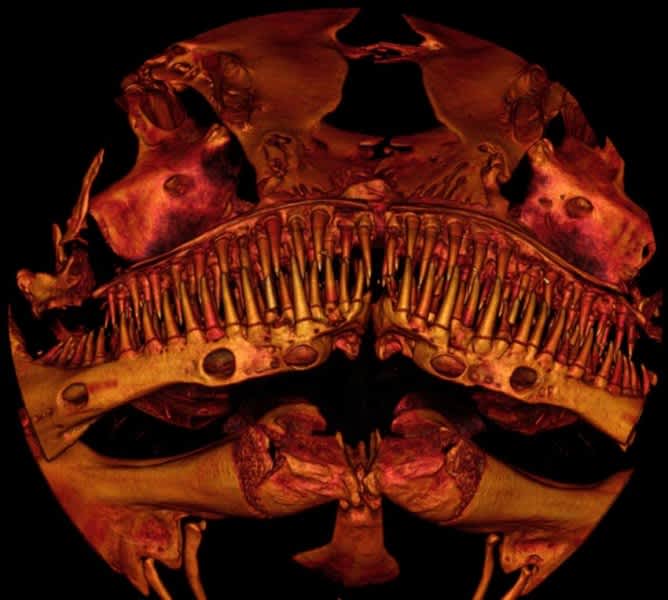Alien-like Catfish Defies Classification
OutdoorHub Reporters 05.14.14

In the remote Western Ghats region of Kerala, India, a tiny catfish occasionally surfaces from its subterranean home to confound researchers. This new species was first discovered in the 2011, and its strange “alien” nature led those studying it to give it the name Kryptoglanis shajii. Scientists are unsure how to classify the fish because its skeletal structure is remarkably different than any other catfish species in existence.
“The more we looked at the skeleton, the stranger it got,” said Lundberg, emeritus curator of Ichthyology at the Academy of Natural Sciences of Drexel University and catfish expert, said in a press release. “The characteristics of this animal are just so different that we have a hard time fitting it into the family tree of catfishes.”
Those differences include the absence of a dorsal fin, a mouth reminiscent of a bulldog’s snout, subcutaneous eyes, and four pairs of barbels. Using a mix of digital radiography and CAT scans, Lundberg and his colleagues revealed that the fish’s face featured several bones that are absent in other catfish. Perhaps the most noticeable difference is that the new species sports four rows of conical—and very sharp—teeth.
“In dogs that was the result of selective breeding,” Lundberg explained regarding the unique bones. “In Kryptoglanis, we don’t know yet what in their natural evolution would have led to this modified shape.”

Certainly, if other catfish species had four rows of razor-sharp teeth, noodling for the animals would be a much more dangerous sport. Researchers say that the diet of the strange fish is most likely meat-based. Although Kryptoglanis shajii is little larger an adult human’s pinkie finger, the fish still manages to be voracious predator. Lundberg believes that the fish uses its speed to capture small invertebrates and insects in groundwater.
For now, the Kryptoglanis shajii remains the only member of its genus and family.
You can see a 3D rendering of the fish’s skeleton below:

